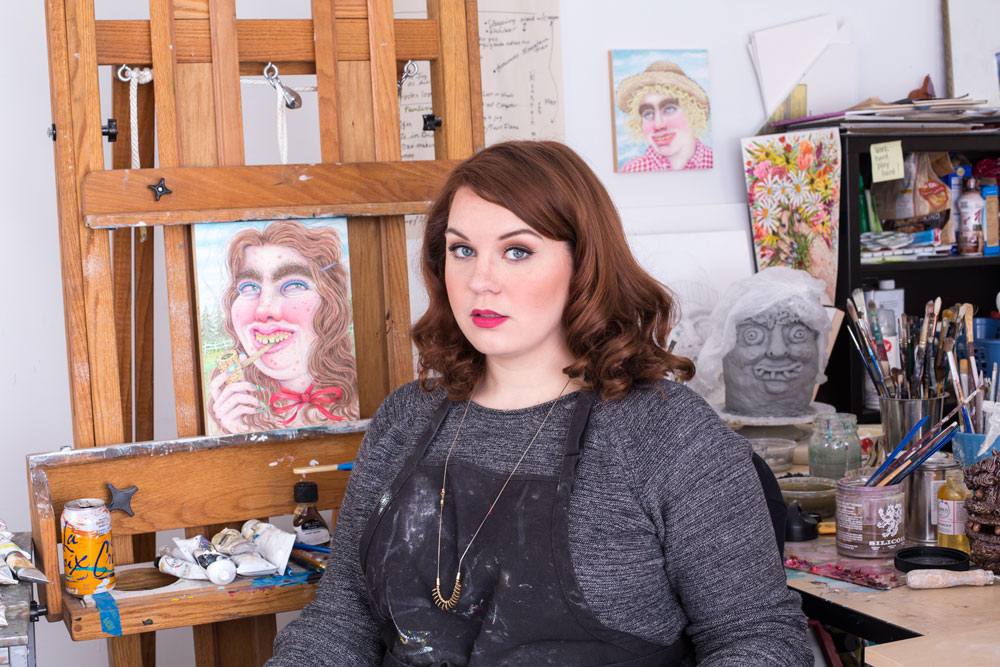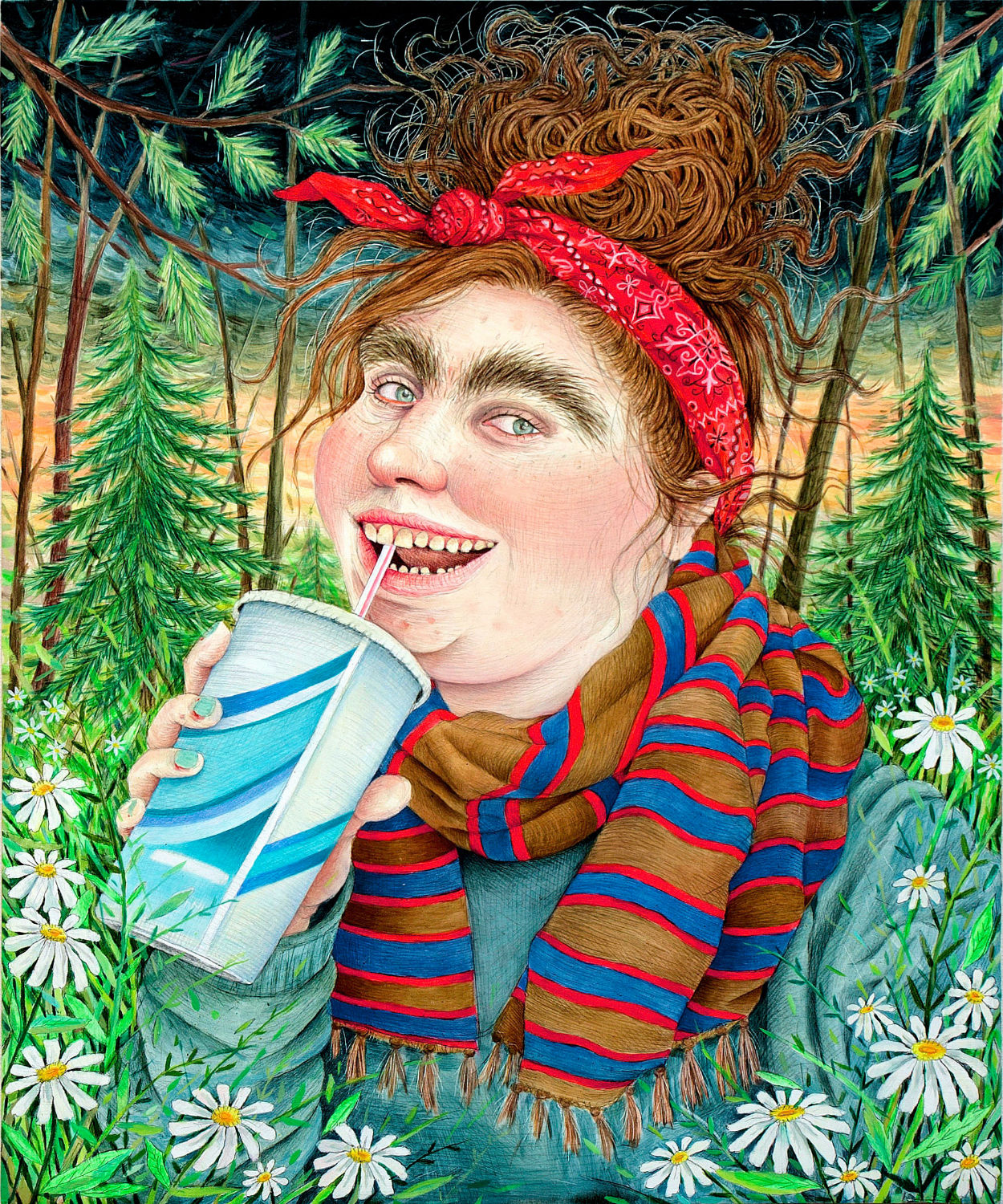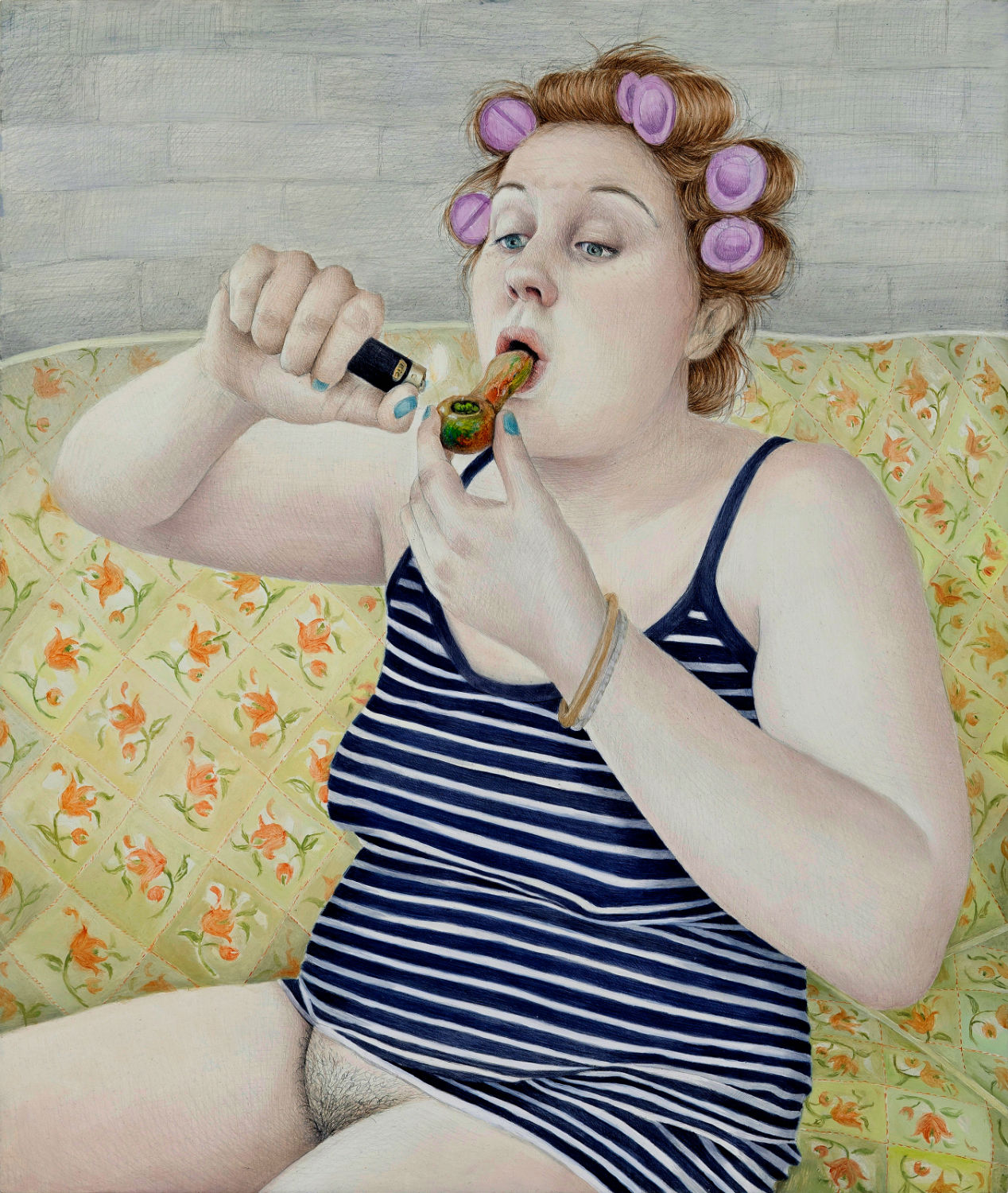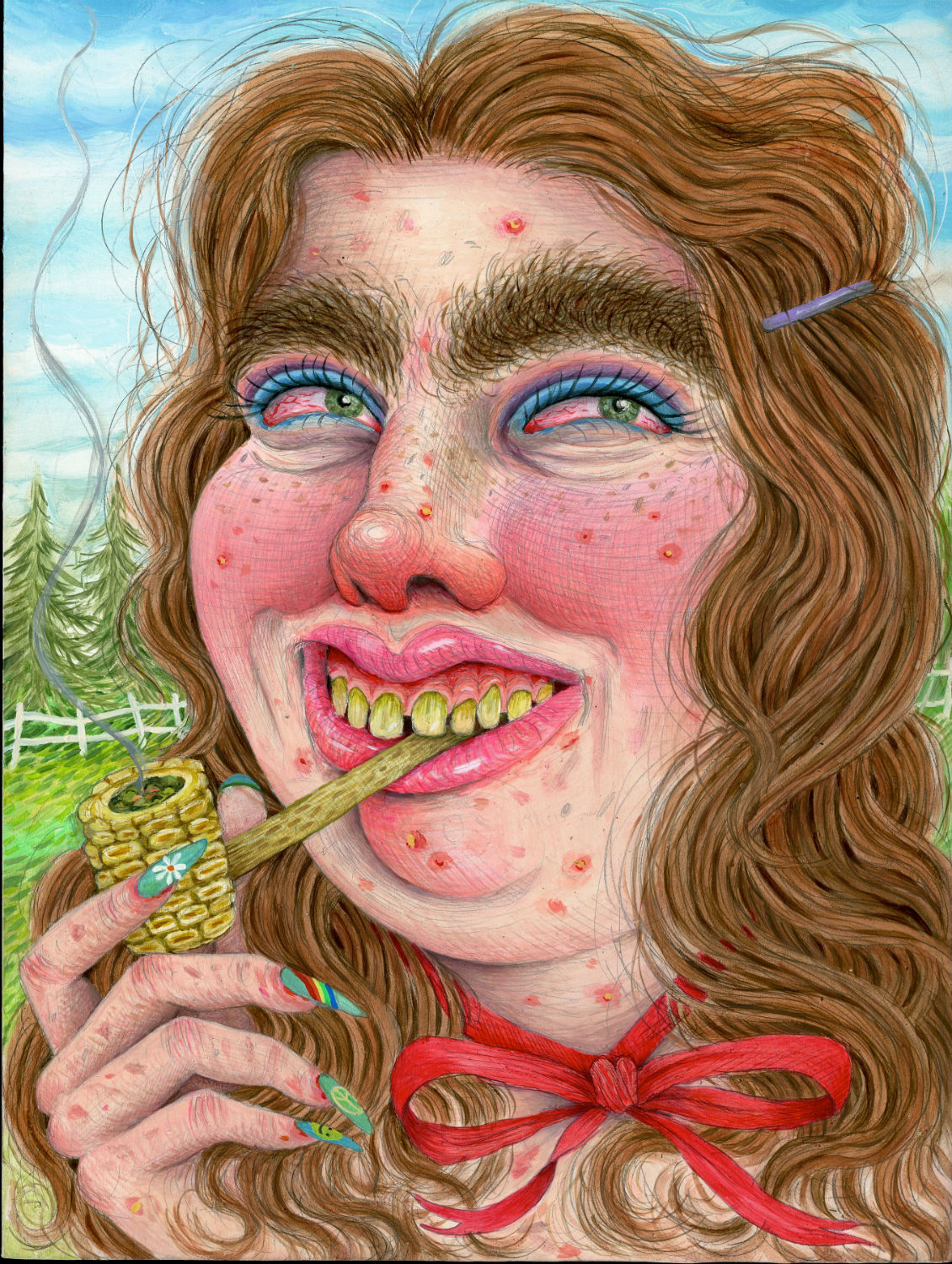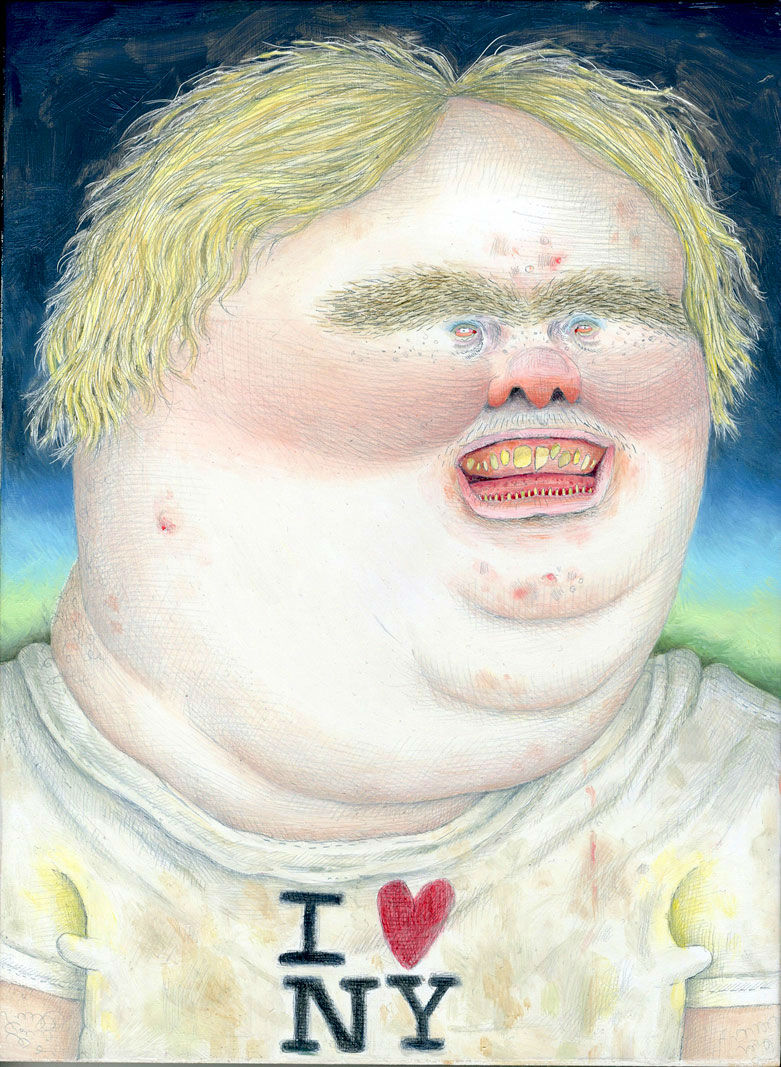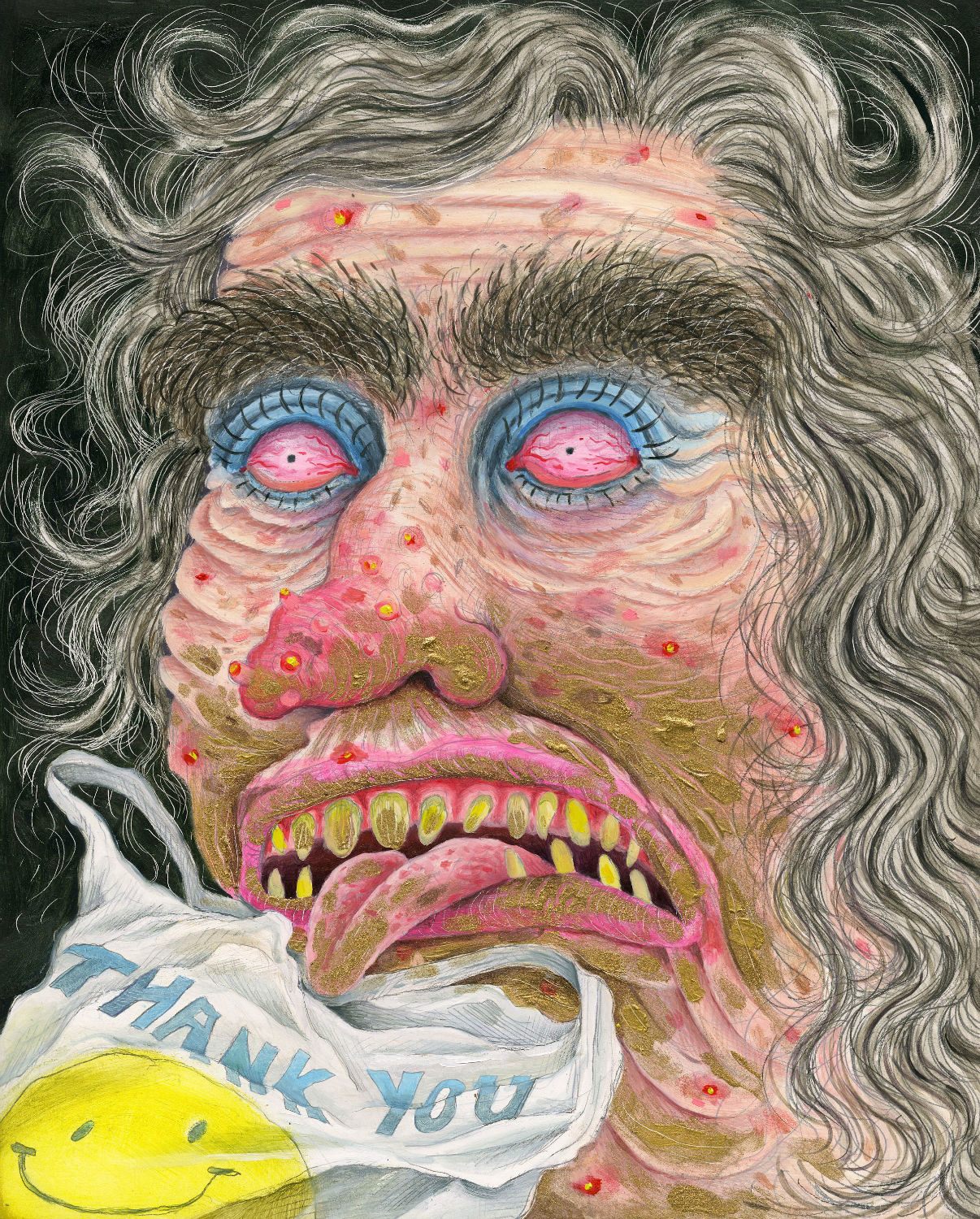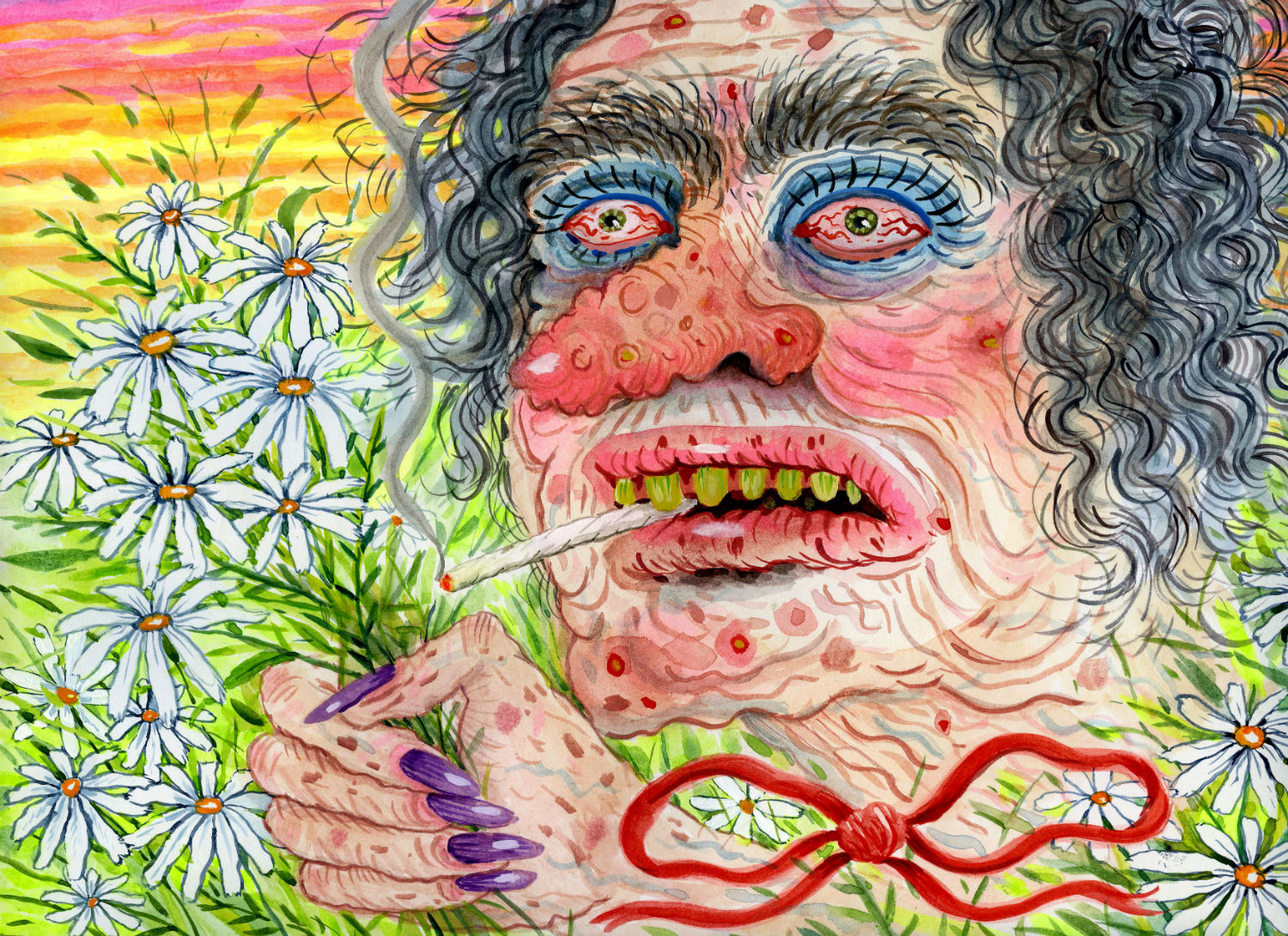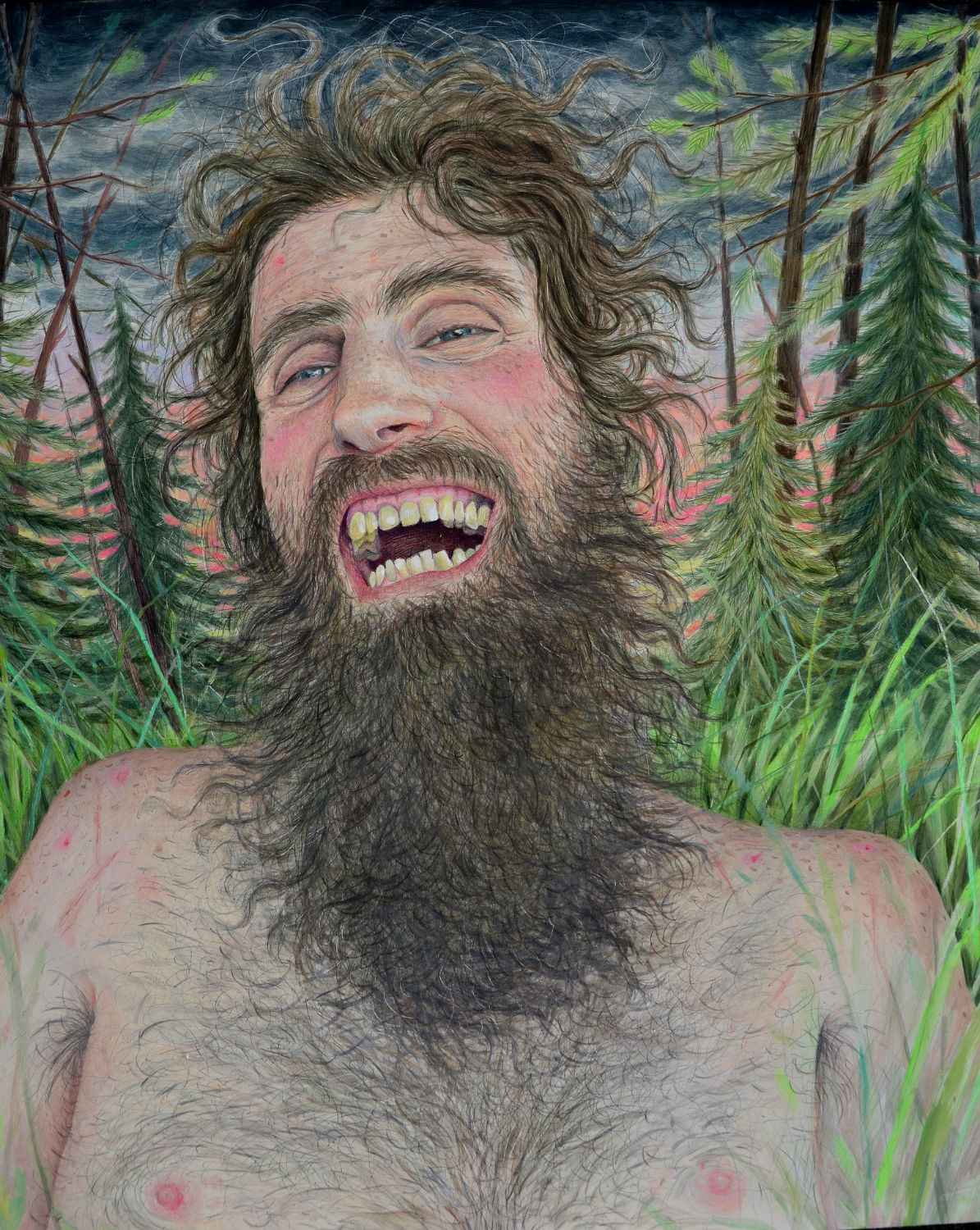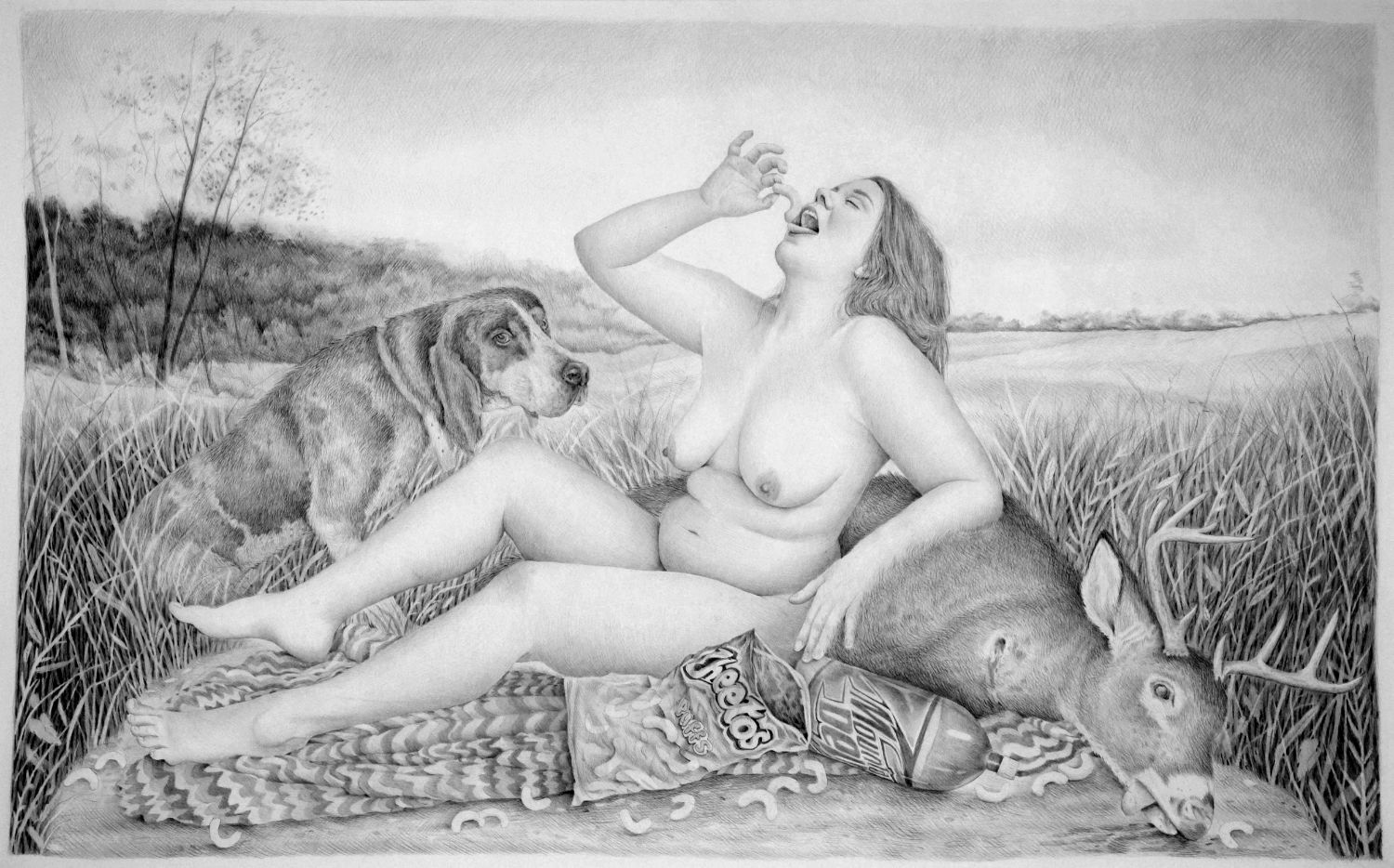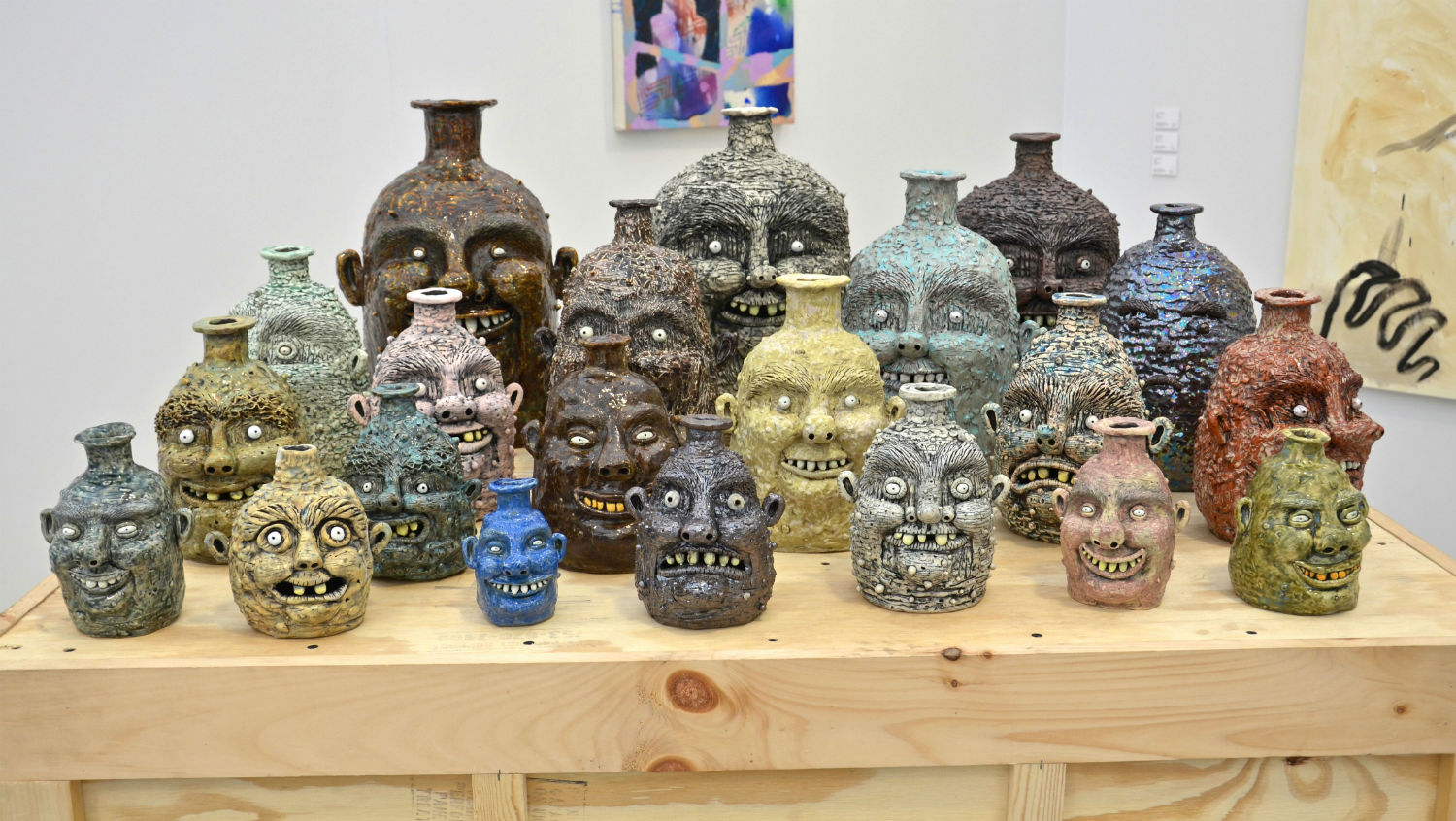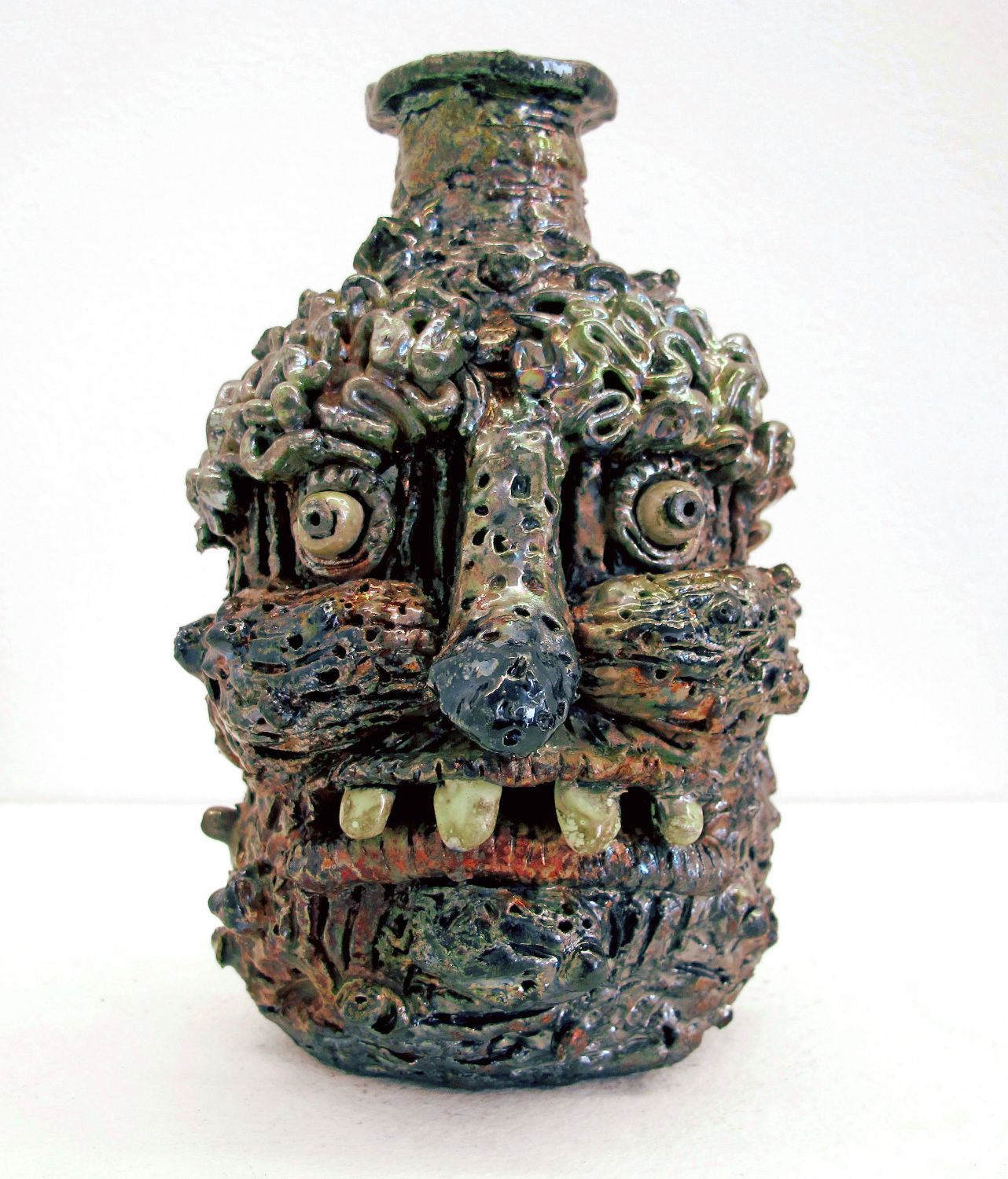Rebecca Morgan’s images are so moving that we jumped like jackrabbits to get our grubby hands on them. The charm of her fleshy figures radiates with relentless confidence. While flexing their flaws, they are flawless as subjects of art, imperfectly perfect and magnetic in their realness. If only one figurative artist could be immortalized in contemporary American art history, Rebecca Morgan would be a top contender. Bow down to our Appalachian queen.
This is an excerpt. Read the full interview in the June, 2016 issue of Juxtapoz Magazine.
Kristin Farr: What are hunting camps and why are they a stage for your work?
Rebecca Morgan: A lot of sportsmen have their own hunting camps that are usually a place where they congregate during hunting season as a base. They are often simple, without luxury, and remote. Hunting camps are often the first place that teenagers go to party. Camp is where you go to get drunk, have sex, shoot guns, smoke, fight and generally get rowdy deep in the woods. It’s a meeting place, a spot where you can retreat to relax or experience camaraderie or do whatever you want. In early American literature and folklore, the woods are symbolic as a place outside of society, ungoverned by social rules, standards and prying eyes. Often the characters retreat to the woods to do their bad behaviors or secret rituals far outside of city limits, and that rings true in my experience. The woods serve as the theatrical setting for most of my portraits.
How does Pennsylvania Dutch folk art influence you, and how do your ceramics connect to the history of face jugs?
As a child, I saw hex signs on barns, antiques, folk and outsider art, handcrafted tchotchkes, utilitarian objects, hand-painted signs and all sorts of unique ephemera which informed my aesthetic. The jugs reclaim that vernacular. To that I added my own personal language of mark-making, evoking the style of my cartoons.
Face jugs embody a symbolic folk tradition. They’ve been a common image and presence in museums, homes, and antique stores, especially in Appalachia and the South. Slaves used face jugs as grave markers designed to keep the devil away. If they broke while exposed to the elements, it meant the soul was restless, or wrestling with the devil. I always knew face jugs as personally crafted vessels used to store liquor; their features would frighten children so they would not to try to meddle with the contents. My work is an extension of the face jug tradition, expounding on a familiar art object from the country as an homage in my own visual vocabulary. I created them with the idea that they personified an intangible reverence for the pastoral; they are right at home with country spells, secrets, history and traditional storytelling of early American tales and Appalachian mysticism. Though an ambiguous narrative lurks behind them, they are fundamentally utilitarian objects. Yet they are also autonomous creatures, as if they’ve always just been sitting in the woods existing on their own. The jugs are very powerful in personification. I’ve never thought of my art as characters so much as I have with these sculptures; perhaps it is their physicality.

Your characters feel very empowering. Is that a common reaction?
I hope for that reaction! Many have expressed how they make them feel empowered or refreshed. The face jugs, cartoons and paintings represent a kind of blissful ignorance: they’re totally fine with looking so hideous and awful; it’s of no consequence to them. Though covered in acne, wrinkles, and blemishes, their confidence and contentment is the ultimate acceptance of self-love. They’re blissfully unaware, unruly, wild and untamed. They live off the grid, free, unaffected by anyone or anything’s influence, and I’m very attracted to that concept. I am always interested in the anti-hero, the underdog, the unlikely winner. I root for them and I see a lot of myself in them. There is the expression in art: paint or make what you know. I use myself as a diaristic model. Even when the cartoons or figures are not outrightly me, they represent a veiled self-portrait. As a tween, I had bushy eyebrows and a faint mustache, and they almost always find their way into the cartoons; it’s like a little homage to the awkward shit that ultimately defined me. Comedy works in that way, too: making fun of yourself and telling the world your own shortcomings before anyone else can get to you first. The more you embrace your own flaws, the less ammunition others have against you. The art world can be a very serious place, and in that context, it simply feels good to make a cartoon mountain man vomiting.
The work is absolutely about my emotional discomfort. Illustrating intimate scenes and scenarios of my life lets me reclaim power and ownership of those hard times and weird emotions. Humor is cathartic for me. Embracing the discomfort, flaws and oddity is a way to turn it into lightness. I think most people can identify with that, and hopefully, it makes other people relate and laugh at themselves (and me) through the work. I am endlessly fascinated by humans. The body is so potent as a vessel to convey all kinds of narratives. This is why I am a figurative artist.
Is your work ever misunderstood?
Many people from home felt as if I was making fun of rural individuals, making them simpleton idiots, but that is very far from the truth, as I am endlessly proud and inspired to have grown up in rural Pennsylvania. It’s the worst when people don’t understand the intent, or mistake what you do for something else, but it is out of your control. There is a lot of learning to let go in art. Sometimes I just want to paint a goofy, cathartic picture of a wrinkled granny witch smoking weed.

Are you your most frequent model?
The large-scale graphite drawings, like Odalisque, and most of the females in the naturalistic paintings are specifically representations of myself. Many times the characters are inspired by people I knew growing up: classmates, tavern heroes, and subjects of local gossip. Most of the time, they are general archetypes: the maiden, the mountain man, the witch, the good girl, the bad girl, a farmer, an artist. I want to be the good girl. I want to be the cool artist. I want to be the mountain man living off the grid. I want to be the mysterious loner woods witch. I look for a classical and timeless pose, and often use Greek figurative sculpture as a starting point. Sometimes something strikes me as I am scrolling or creeping around on Instagram or Facebook. Some friends, acquaintances or strangers might be surprised to know how often I will use an image of them and repurpose it for a work!
I have used people I know who might have classical or defining features but can stand in as an “everyman” scenario. With the Mountain Man painting, my model was a scrappy looking friend from Pennsylvania whom I asked to pose shirtless on my porch. We cracked jokes, and I prodded him to get this wide-eyed wild cackle that would look like he was laughing, jovial and happy, yet could also be viewed as manic, wild or insane. So many people have said that they know someone who looks just like him, and that is what I am striving for: a familiarity or relatable archetype, person or shared experience.
----
Read the full interview in the June, 2016 issue of Juxtapoz Magazine, on newsstands worldwide and in our webstore.

